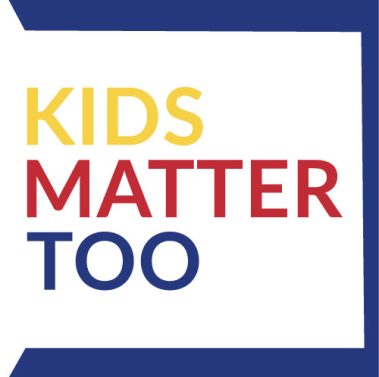Statewide Coalition of Parents and Educators Calling on Lawmakers to Provide Critical Resources for Kids
Denver, CO – Today, the Legislative Council announced that the General Fund revenue forecast for FY 2018-19 is higher by $1.3 billion relative to the December forecast. Governor John Hickenlooper’s Office released a statement today earmarking $200 million for the State Education Fund. The Kids Matter Too Coalition, an ad hoc group of Colorado school districts, is calling on lawmakers to allocate a greater percentage of these resources to benefit students.
Districts will be hosting events throughout this week to raise awareness of the needs of their students and schools. Coalition members are hopeful that by raising awareness in their communities, they can work with the Governor’s Office and lawmakers to provide additional funding for schools.
School Districts across the state are coping with a teacher shortage crisis, shrinking funds for special education, and inadequate mental health services. More than 10 events are scheduled in communities from Greeley, to Colorado Springs and from Sterling to Buena Vista.
“Investing in our children is essential if we want to ensure that Colorado’s future remains bright and that our economy continues to grow,” said Brian Ewert, Superintendent of Littleton Public Schools. “Our state is not keeping up with other states, but this surplus funding could provide communities with the additional resources they need for special education and mental health services and to address a crippling teacher shortage. We hope that lawmakers will listen to Colorado parents, because our students deserve better.”
Colorado currently ranks 42nd in the nation in per pupil funding and 50th in teacher salary competitiveness. There are more than 3,000 shortages that need to be filled in the upcoming school year alone.
State and federal funds for students with disabilities also aren’t keeping up with districts increased special education costs. Only Arizona and Oklahoma spend less on special education services than Colorado, and students with special needs are dealing with the consequences.
In addition, funding additional mental health services is more than just a resource to help student’s succeed, it’s a student safety issue as well. At a time when enrollment is increasing, budget pressures have decimated the ranks of school counselors. This has caused the counselor-to-student ratio to widen leaving fewer resources for kids at all levels of schooling.
Background on Teacher Shortage Crisis:
Colorado has a severe shortage of teachers resulting from a lack of support and training tools, as well as inadequate pay. Although teachers are continually being asked to do more, the average Colorado teacher’s starting salary is nine percent below the national average (Colorado Department of Higher Education, 2017). This makes it difficult to recruit talented teachers which hurts Colorado’s competitiveness and ability to provide students with a quality education. About 3,000 to 3,500 openings need to be filled for the coming school year alone. Colorado is 50th in teacher salary competitiveness, 49th in the number of new teachers entering classrooms, 41st in pupil-teacher ratio, and 42nd in per pupil spending (Great Education Colorado).
Background on Special Ed Funding
Only Oklahoma and Arizona spend less than Colorado on special education services. The federal government contributes less than 10 percent and the state contributes less than 20 percent directly to school districts. That leaves local school districts to cover the remaining 70% of the cost of special education, from state and local revenue sources (about $82 million) (Colorado Department of Education).
Background on Mental Health Services
Kids come to school with a variety of personal situations yet are expected to perform. More than 15 percent of Colorado kids have some form of mental health issue, and alarmingly almost one out of five kids in Colorado has seriously considered suicide (Healthy Kids Colorado Survey, 2015). Budget pressures have decimated the ranks of school counselors, causing the counselor-to-student ratio to widen leaving fewer resources for our kids at all levels of schooling. For every $1 the state spends on counselors, it saves $20 in social safety net services.
###
FOR IMMEDIATE RELEASE
Monday, March 19, 2018
Contact: Erin McCann
(303)746-2365
